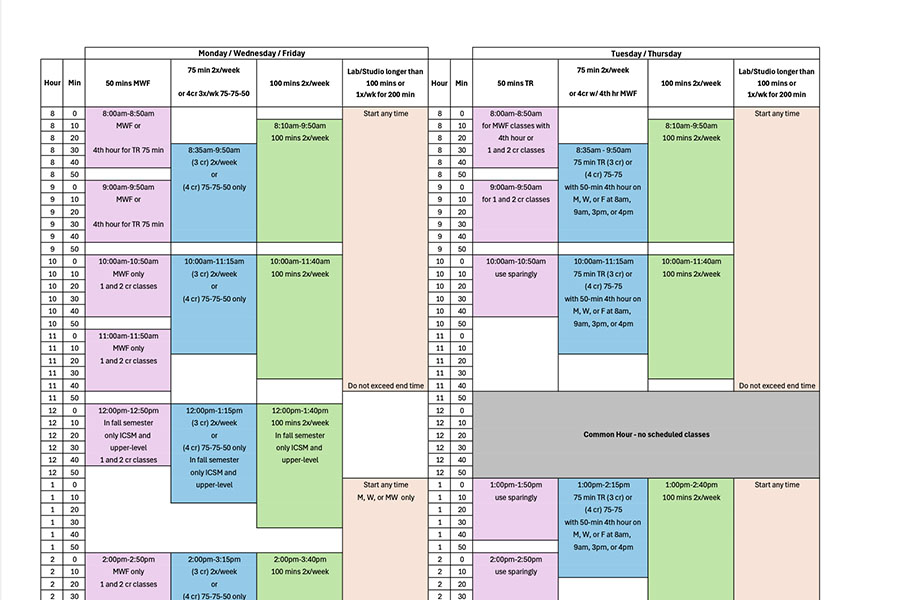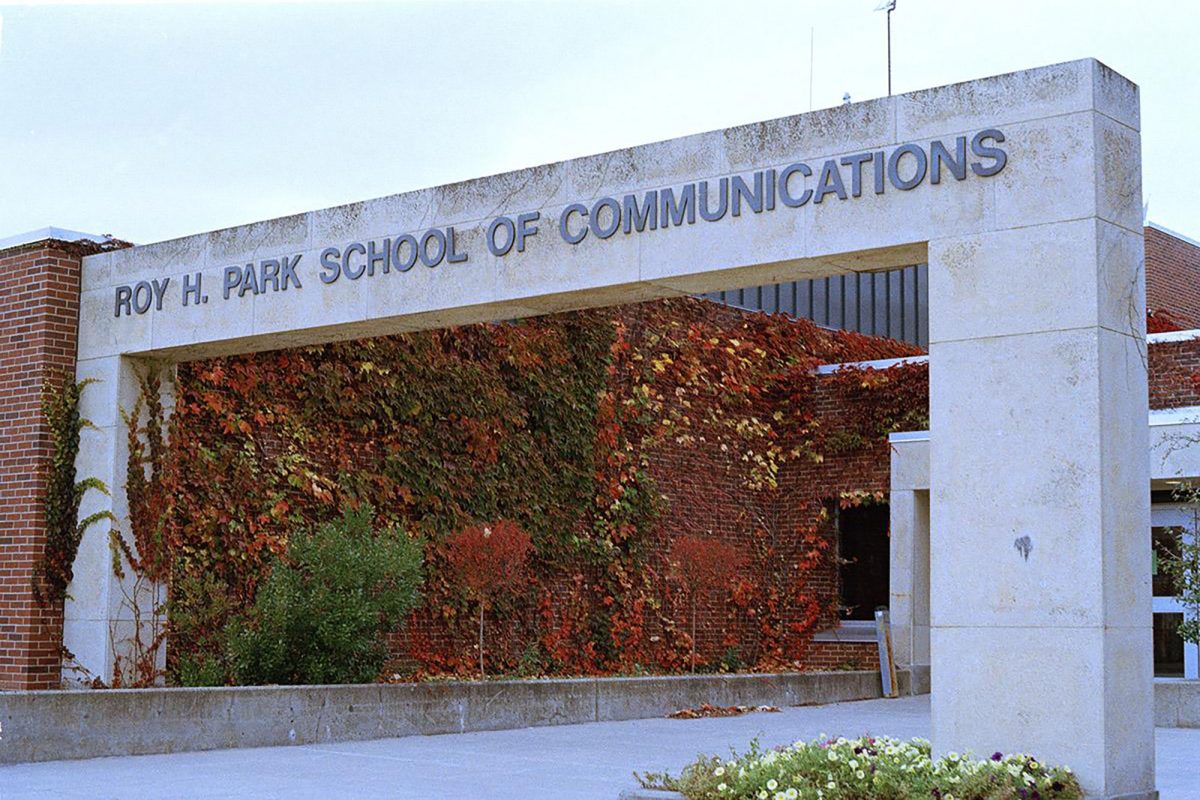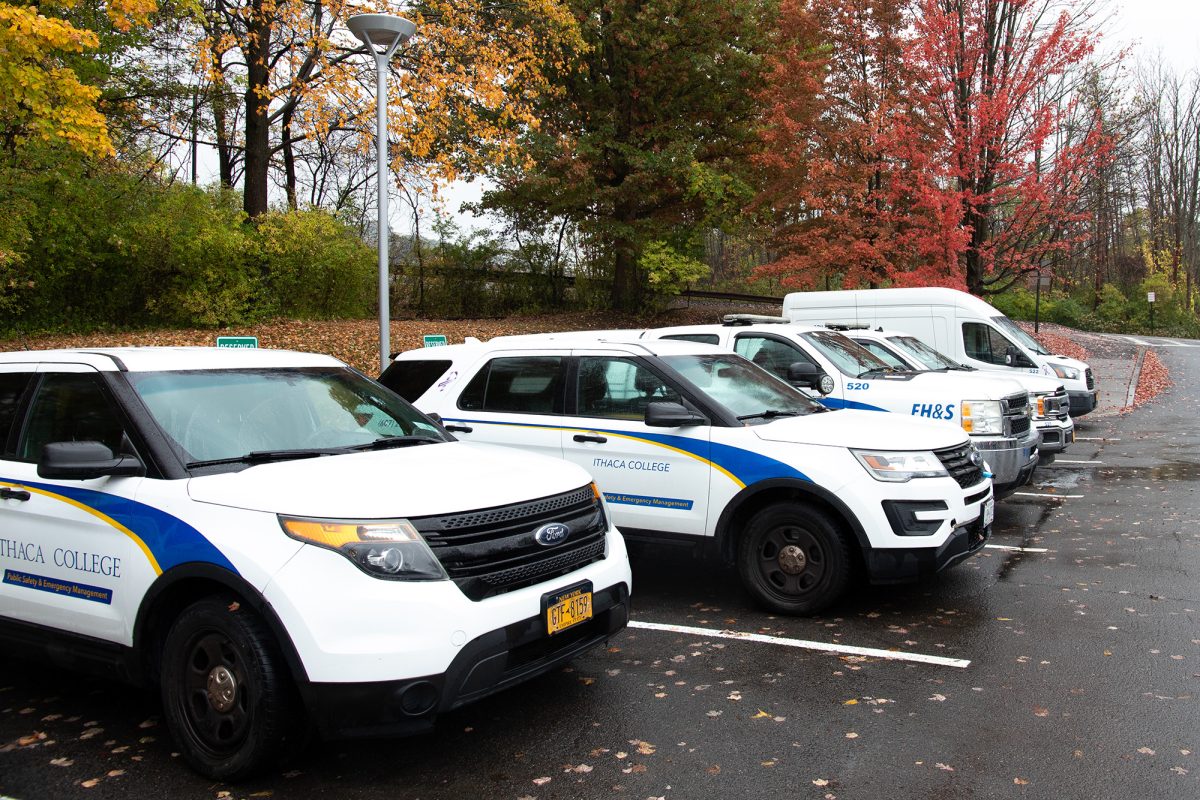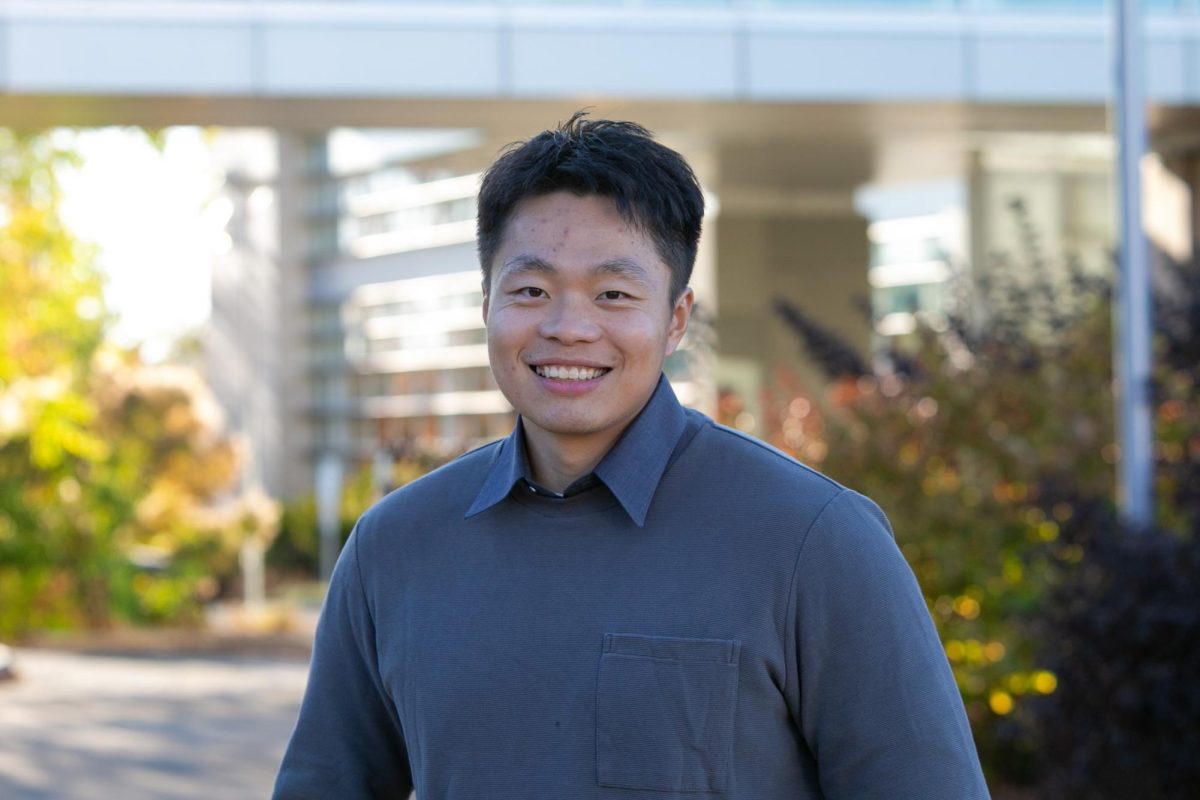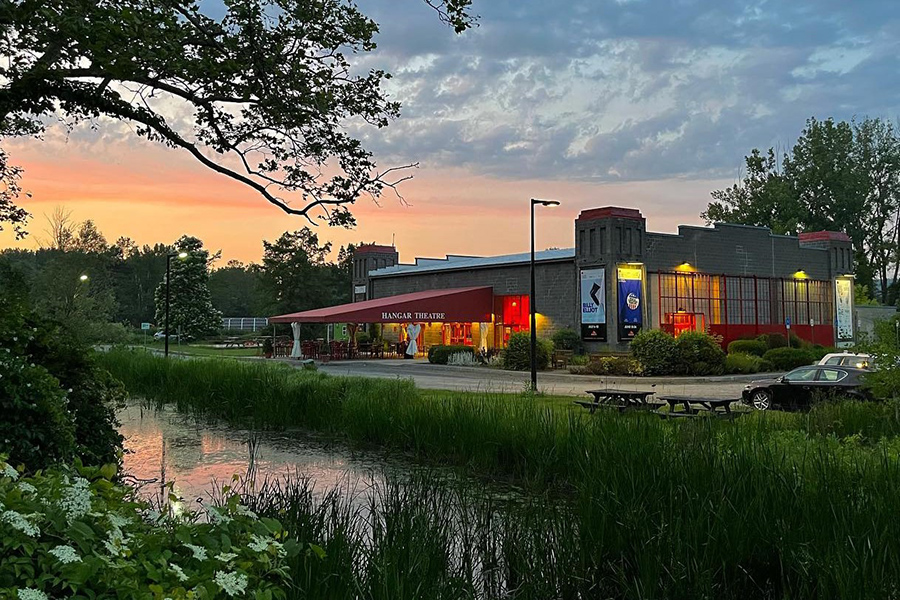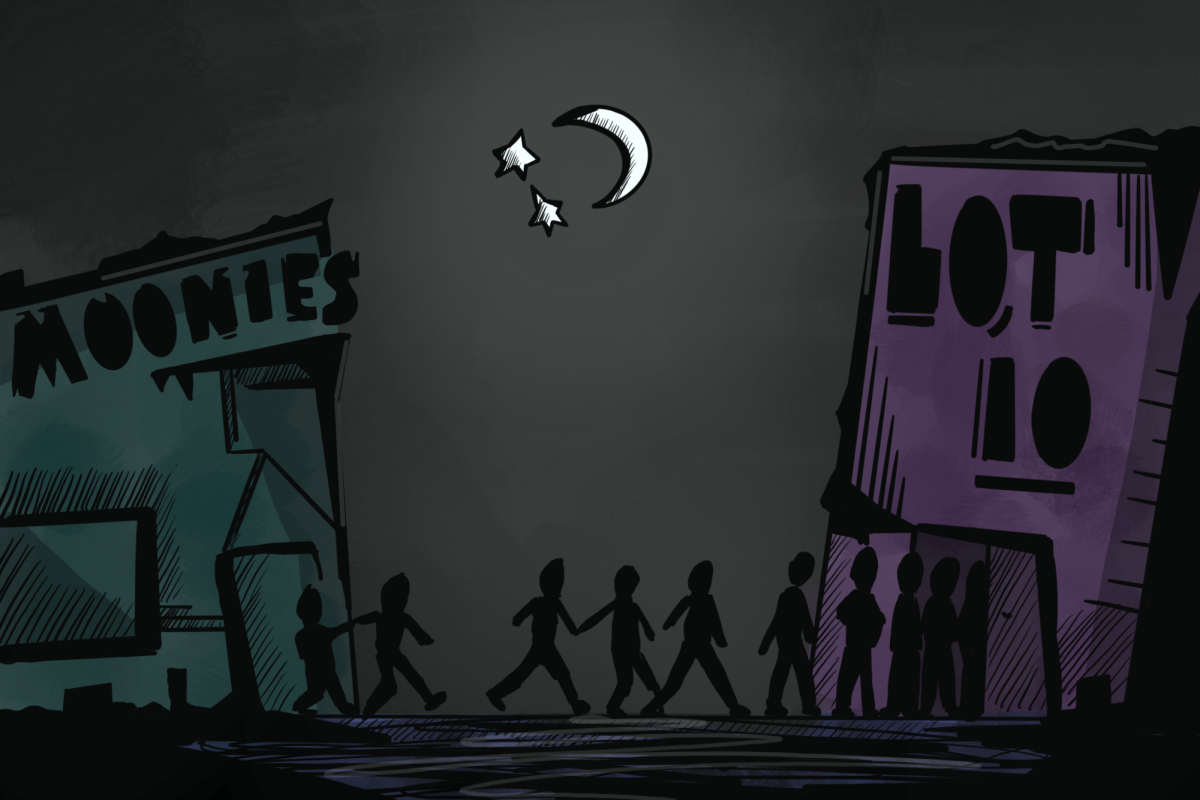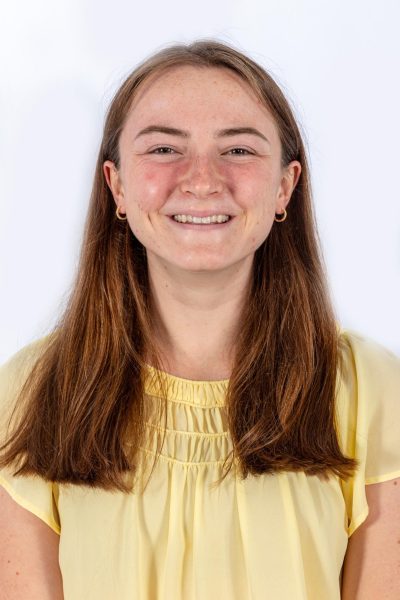Key points
- The schedule grid provides common meeting times for undergraduate classes at Ithaca College. The grid that the college used to schedule courses through Spring 2025 did not accommodate labs, studios or 4-credit courses, so many departments used meeting patterns outside of the schedule grid. This made it challenging for students to schedule courses outside of their major.
- The Offices of the Provost and Registrar have been collecting feedback and data to revise the schedule grid since 2019. The college waited to implement a new grid as the campus focused on responding to the COVID-19 pandemic and then changing curricula and adjusting to a new credit hour policy.
- The college has implemented a new schedule grid, which departments will use to schedule Fall 2025 courses. The college asks departments to schedule all courses within the grid, but departments can request an exception if necessary.
- The biggest changes to the schedule grid are adding meeting patterns for 4-credit courses, labs and studios. The schedule grid maintains a common hour on Tuesday and Thursday and now blocks off Tuesday evenings for athletic practices.
Ithaca College has implemented a new course scheduling grid after several years of collecting data and feedback and considering revisions to the grid. Departments will use the new grid to plan their Fall 2025 course meeting times.
The schedule grid provides common meeting times for all undergraduate classes. Melanie Stein, provost and senior vice president for academic affairs, said the old schedule grid did not effectively reduce time conflicts as intended because many departments scheduled course meetings outside of it. She said this was because the old schedule grid had limited meeting pattern options for departments to choose from. The old grid was primarily designed for 3-credit courses and did not include meeting patterns for labs and studios.
“There was a schedule grid that only accommodated, I would say, roughly 40% of our courses,” Stein said via email. “There were whole parts of the college that were scheduling courses completely off grid, meaning they were using their own meeting times which overlapped the official grid slots. Students majoring in those places, it was much harder for them to incorporate courses that were outside of where they were majoring and then the flip side of that, it was very hard for students outside of these areas to take courses in them because nothing matched up.”
Stein said that as administrators collected feedback from the campus community during the strategic planning process in 2018–19, many students shared that the courses they wanted to take overlapped by 10 or 15 minutes. The provost’s office recognized that course scheduling created a barrier for students who wanted to experience both liberal arts and pre-professional curricula.
“[We realized] this is … not a student centered way of doing things, and we need to try and develop a more … common scheduling mechanism to reduce these barriers for students and enable them to fully take advantage of the curriculum,” Stein said.
The Office of the Provost formed an action group to revise the schedule grid during the 2019–20 academic year and reassembled a schedule grid committee in 2021–22 after the campus reopened from distanced COVID-19 pandemic learning. The Offices of the Provost and Registrar released a draft schedule grid in 2022. However, Stein said the campus was already adjusting to a new credit hour policy, redesigning curricula and degree requirements, and changing some courses from 3 to 4-credits. Implementation of the new grid was delayed to allow faculty to adjust to these changes and to gather more data about how the changes impacted the campus’ scheduling needs.
Stein said her office worked with the registrar’s office to collect data about what times departments requested to schedule courses, which meeting patterns faculty felt were most pedagogically effective — like one long class meeting versus three shorter class meetings — and how faculty changed meeting times for courses that shifted credits.
Stein said she and the registrar decided in Fall 2024 that they had gathered enough data and were ready to move forward with revising the grid. They launched a call for faculty volunteers to serve on the Schedule Grid Working Group. The group presented a draft grid to faculty members during listening sessions in December 2024 and used the feedback they received during the sessions to further refine the grid.
Stein said the Division of Information Technology and Analytics created a simulation to project how the classes scheduled during Fall 2024 and Spring 2025 could be scheduled using the new grid.
“We were thrilled because the results were really, really positive,” Stein said. “We were able to accommodate incredibly high percentages [of courses]. When we looked at things that fell off … there were things that could easily be worked around, and they were tiny in number. So that gave us a lot of confidence.”
The college asks departments to schedule courses within the meeting times on the schedule grid as much as possible, but departments can request an exception using a form on the Office of the Registrar’s website.
Stein said the biggest change to the new schedule grid is adding meeting patterns for labs and studios and increasing meeting patterns for 4-credit courses.
The new schedule grid maintains the campus-wide common hour on Tuesdays and Thursdays, but blocks off noon to 1 p.m. compared to the old grid which blocked off 12:15-1:05 p.m.
The grid also continues to mandate that required courses with one section offered during a semester cannot be scheduled during the 4-6 p.m. athletic practice time block, and classes must end by 5:15 p.m. on Friday to allow athletic teams to travel for competitions. The new grid also asks departments to avoid scheduling classes on Tuesday evenings to allow athletics and extracurricular activities to meet.
Stein said she wanted to ask students to be patient and understanding with faculty members as they try to adjust to the schedule grid changes.
“The entire reason for doing this … has to do with reducing conflicts for students and making it more possible for students to move more freely across the college’s curriculum,” Stein said. “Any kind of a change like this is often a little bit bumpy, but what we believe is that … [this will] reduce the number of conflicts that students are experiencing when they go and schedule.”


